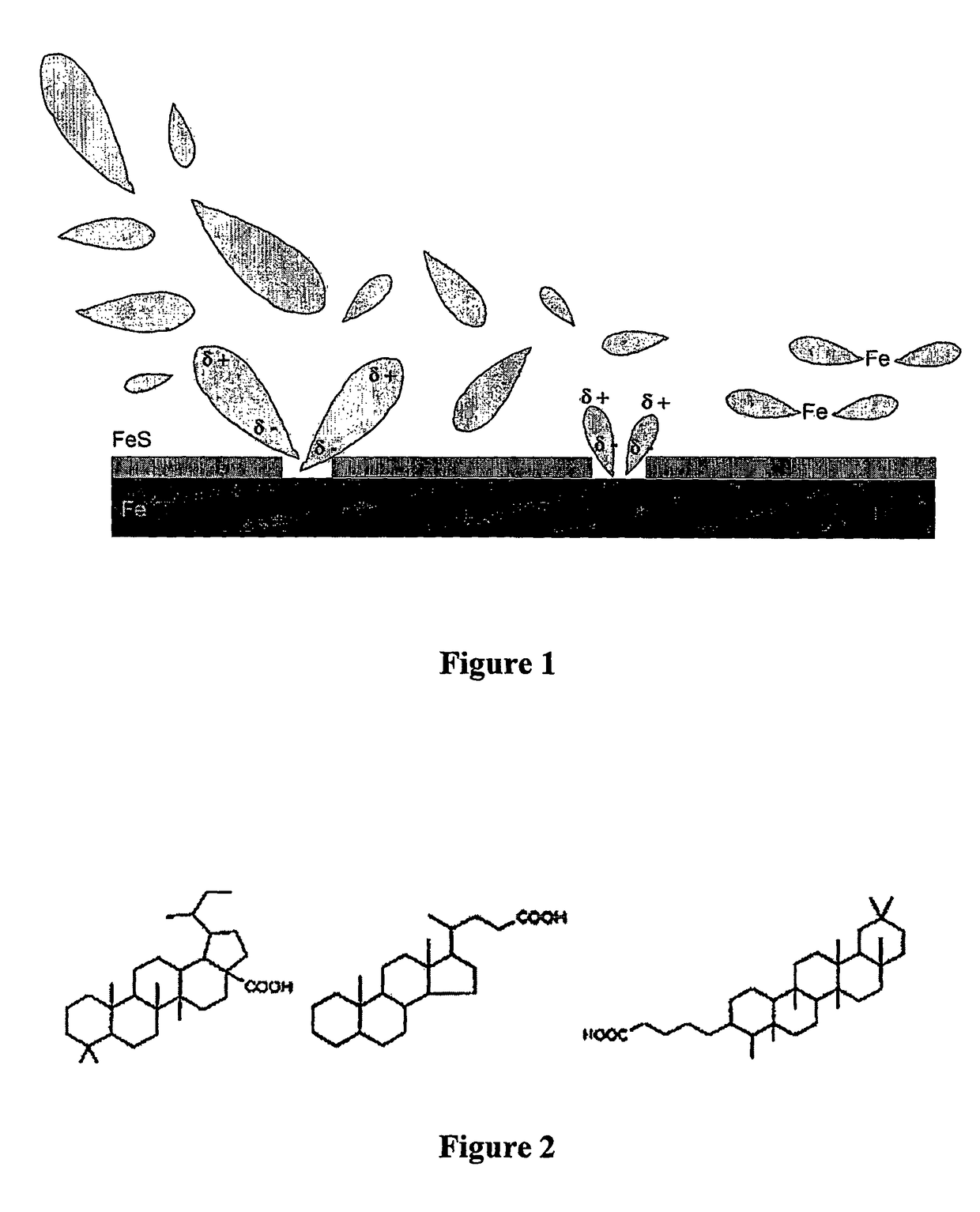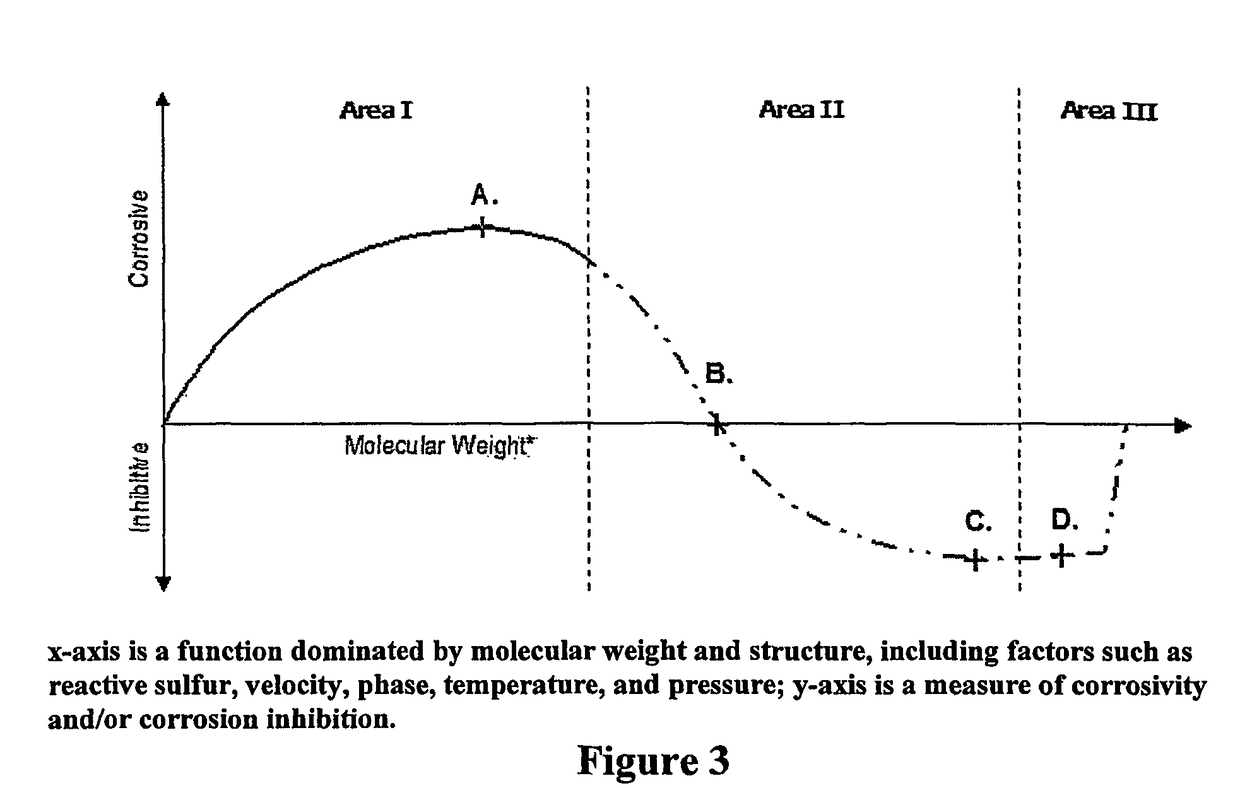Compositions, configurations, and methods of reducing naphtenic acid corrosivity
a technology of naphthenic acid and corrosivity, which is applied in the field of corrosion associated with naphthenic acid, can solve the problems of premature equipment failure of such units, high content of naphthenic acid, and high content of crude oil, and achieve the effect of reducing naphthenic acid corrosion and naphthenic acid corrosion
- Summary
- Abstract
- Description
- Claims
- Application Information
AI Technical Summary
Benefits of technology
Problems solved by technology
Method used
Image
Examples
Embodiment Construction
[0026]The inventors have discovered that corrosivity in various hydrocarbon feedstocks, and especially in crudes, strongly correlates with the presence of a particular fraction of naphthenic acids. Specifically, the inventors discovered that presence of an alpha fraction of naphthenic acids in crudes correlates with increased corrosivity of such crudes, while presence of a beta fraction of naphthenic acids correlates with decreased corrosivity, and even inhibition of corrosivity of such crudes.
[0027]The term “naphthenic acids” as used herein refers to a class of compounds that have a structure of the general formula R—COOH (or R—COO− in deprotonated form, which may form a salt with a cation), wherein R comprises an optionally substituted alkyl, cycloalkyl, or aryl, (each of which may be partially or entirely desaturated) and wherein R is directly covalently bound to the optionally substituted alkyl, cycloalkyl, or aryl, or indirectly via the substituent. Typical substituents include...
PUM
| Property | Measurement | Unit |
|---|---|---|
| boiling point | aaaaa | aaaaa |
| boiling point | aaaaa | aaaaa |
| pKa | aaaaa | aaaaa |
Abstract
Description
Claims
Application Information
 Login to View More
Login to View More - R&D
- Intellectual Property
- Life Sciences
- Materials
- Tech Scout
- Unparalleled Data Quality
- Higher Quality Content
- 60% Fewer Hallucinations
Browse by: Latest US Patents, China's latest patents, Technical Efficacy Thesaurus, Application Domain, Technology Topic, Popular Technical Reports.
© 2025 PatSnap. All rights reserved.Legal|Privacy policy|Modern Slavery Act Transparency Statement|Sitemap|About US| Contact US: help@patsnap.com


